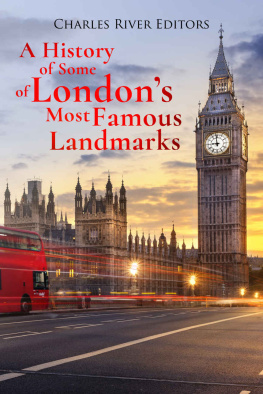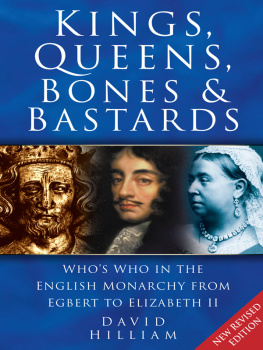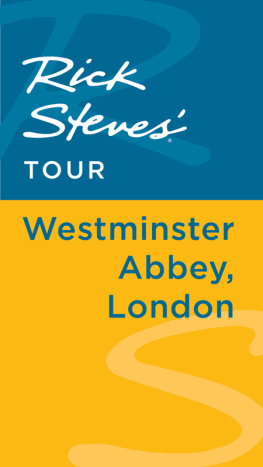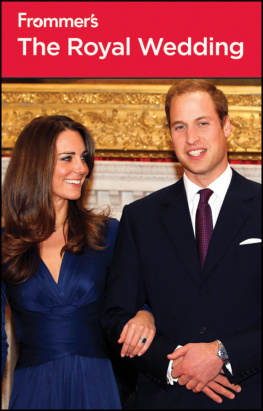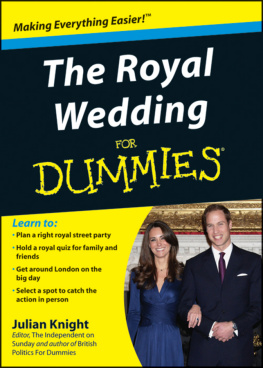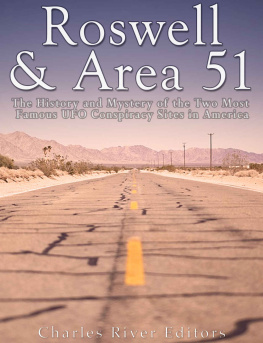A History of Some of Londons Most Famous Landmarks
By Charles River Editors
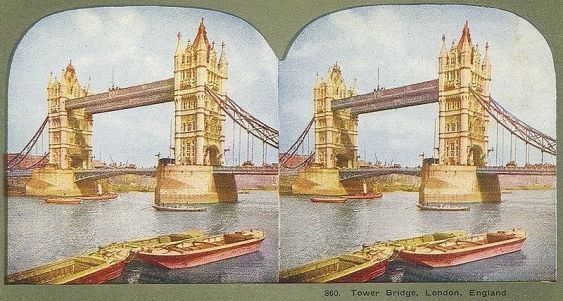
A 1900 stereocard of Tower Bridge
About Charles River Editors

Charles River Editors is a boutique digital publishing company, specializing in bringing history back to life with educational and engaging books on a wide range of topics. Keep up to date with our new and free offerings with this 5 second sign up on our weekly mailing list , and visit Our Kindle Author Page to see other recently published Kindle titles.
We make these books for you and always want to know our readers opinions, so we encourage you to leave reviews and look forward to publishing new and exciting titles each week.
Introduction
Westminster Abbey
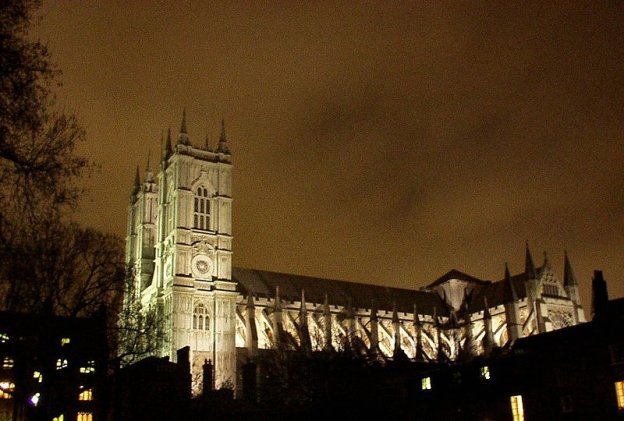
It is eerie being all but alone in Westminster Abbey. Without the tourists, there are only the dead, many of them kings and queens. They speak powerfully and put my thoughts into vivid perspective. A.N. Wilson
It almost goes without saying that Westminster Abbey is one of the foremost sites in Europe when it comes to being steeped in history. Dating back to the reign of William the Conqueror and the Norman conquest, Westminster Abbey has traditionally been the site of royal coronations, royal weddings, and royal burials, and anyone who enters can instantly feel that they are walking in the footsteps of some of the most influential figures in history, from Henry III to Queen Elizabeth I.
Of course, Westminster Abbey is also far more than a place for royalty. As the English became to more intimately associate the site with their history and culture, luminaries from all walks of life have also been interred there, from Charles Darwin and Isaac Newton to Rudyard Kipling and Charles Dickens. Along with effigies, plaques, and various other monuments, walking through Westminster Abbey offers its own sort of crash course on England over the centuries.
While Westminster Abbey has been an important site for nearly 1,000 years, it is perhaps unsurprising that it has had a volatile history, a byproduct of Englands own tumultuous past. As a religious site first and foremost, the Abbey was at the forefront of the religious unrest that occasionally swept the British Isles, whether it was Henry VIIIs formation of the Church of England or his devoutly Catholic daughter earning the sobriquet Bloody Mary. As a result of it all, the Abbey has served different religious purposes over the course of time as well.
The Tower of London
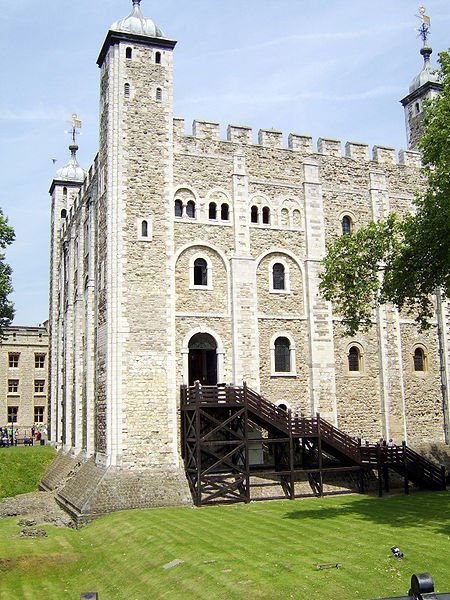
Picture of the original entrance to the White Tower
The Tower of London is one of the most historic sites in all of England, and still one of the most popular. All around is the modern City of London, one of the world's most prosperous and power financial districts, but the Tower is still a daunting structure that looms across the landscape. Not a single structure but a vast network of medieval and early modern fortifications, it anchors the southeastern end of the old City and controls access to the River Thames and, through it, London's connection to the sea. While the both the City and the Thames are often obscured by the walls once visitors are inside the Tower, they are inextricably tied to the building, giving the Tower its entire reason for existence.
Even today, taking a tour of the Tower can seemingly bring its history to life. Inside the visitor center are replicas of a crown, an executioner's axe and similar artifacts, but for most visitors, this is just the start. After they cross a small courtyard and approach the first gate, known as the Middle Tower, they come to a stone bridge over a now-dry moat and enter the castle itself through the Byward Tower. The Tower, like many fortresses of its day, was built in concentric rings, so inside the outer wall is a narrow strip of land before the inner walls. Long, narrow buildings line the inside of the outer wall, and to the left along Mint Street these structures once housed the operation of the Royal Mint, making all of the coins of the realm.
From there, most visitors continue straight along, typically guided by one of the colorfully-dressed Yeoman Guards (the famous "Beefeaters"). Under the watch of the Bell Tower, they continue along the south face of the inner wall, on Water Lane, and just ahead is the famed Traitor's Gate; while today the area around here is paved and dry, in earlier times this was a "watergate" that allowed boats entry to the fortress. It was so named because this was the entrance by which prisoners (often traitors) entered the fortress, often never to leave. Ahead is Wakefield Tower, the entrance to the inner courtyards and a space that can be rented for small banquets and private dinners.
Inside the inner courtyards, visitors get a good first look at the White Tower, the 11th century Norman castle at the heart of the Tower (and the original "Tower" the entire complex is named for). Built of distinctive white stone, it has been a beacon of royal power for centuries. It is four stories tall and at points has walls of up to 15 feet thick, with towers on the four corners that have cupolas atop them (added much later than the original structure). Within the Tower is an impressive collection of medieval armor and arms, as well as the well-preserved St. John's Chapel. Directly behind the White Tower is the Waterloo Block, also known as the Jewel House. A perennial favorite of visitors, the Crown Jewels of the United Kingdom are stored here when not in use.
In the southeast corner of the inner courtyard (the "Inner Ward") is a charming green space backed by lovely Tudor structures whose calm belies their bloody history. This is the Tower Green which was the location of the executions of all of those prisoners who were given "Private" deaths (as opposed to a "Public" death which occurred outside the walls on Tower Hill before the London mob). It is perhaps best known as the site of the deaths of three of Henry VIII's wives: Anne Boleyn, Catherine Howard, and Jane Grey. One of the surrounding buildings, the Queen's House, was named after its most famous prisoner - Anne Boleyn - but was also the site of the trial of the notorious Guy Fawkes.
Other sites within the walls of the Tower include the famous ravens (according to legend, if they ever leave the Tower the monarchy will fall), the museum of the Royal Regiment of Fusiliers (whose ceremonial commander is the Constable of the Tower) and the Ceremony of the Keys. The Ceremony is performed nightly by the Yeoman Warders when they seal the gates of the Tower and the Chief Warder passes the keys to the Resident Governor. Just beyond the Tower rises the great supports of the Tower Bridge (often confused with the smaller London Bridge) and the Thames.
Ultimately, its impossible to fully appreciate the Tower without understanding its context. Like all fortresses, it was built to control and protect its surroundings, and the history of the Tower is bound up in the mutual histories of London and the Monarchy. The unfolding saga of war, imprisonment, glory, and treason in England can all be told through the lens of the Tower, and the lives that intersected with it.

